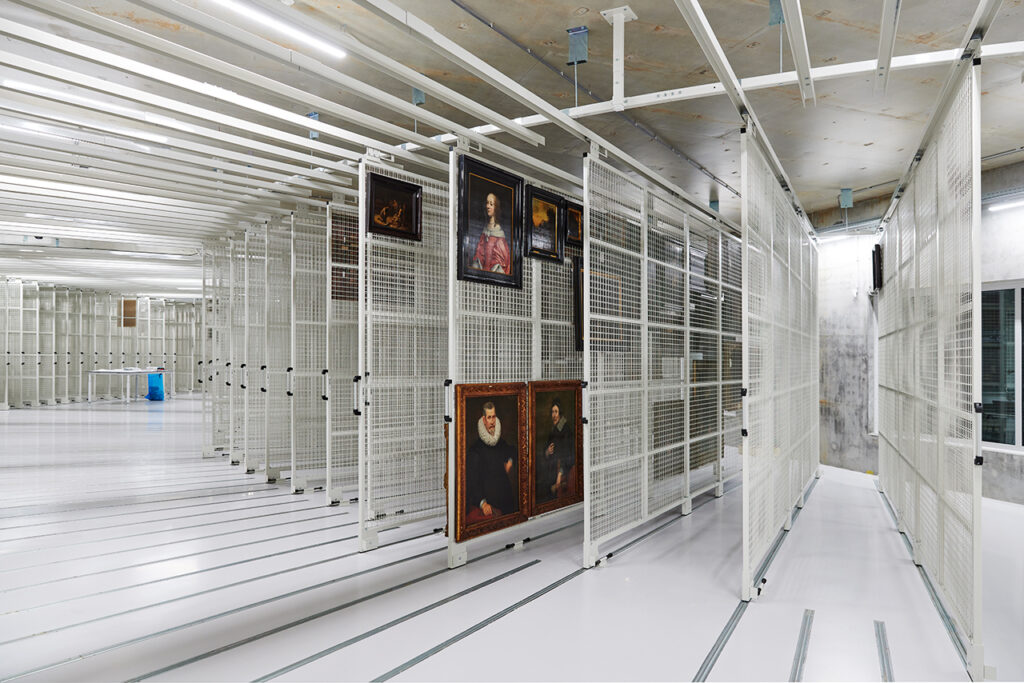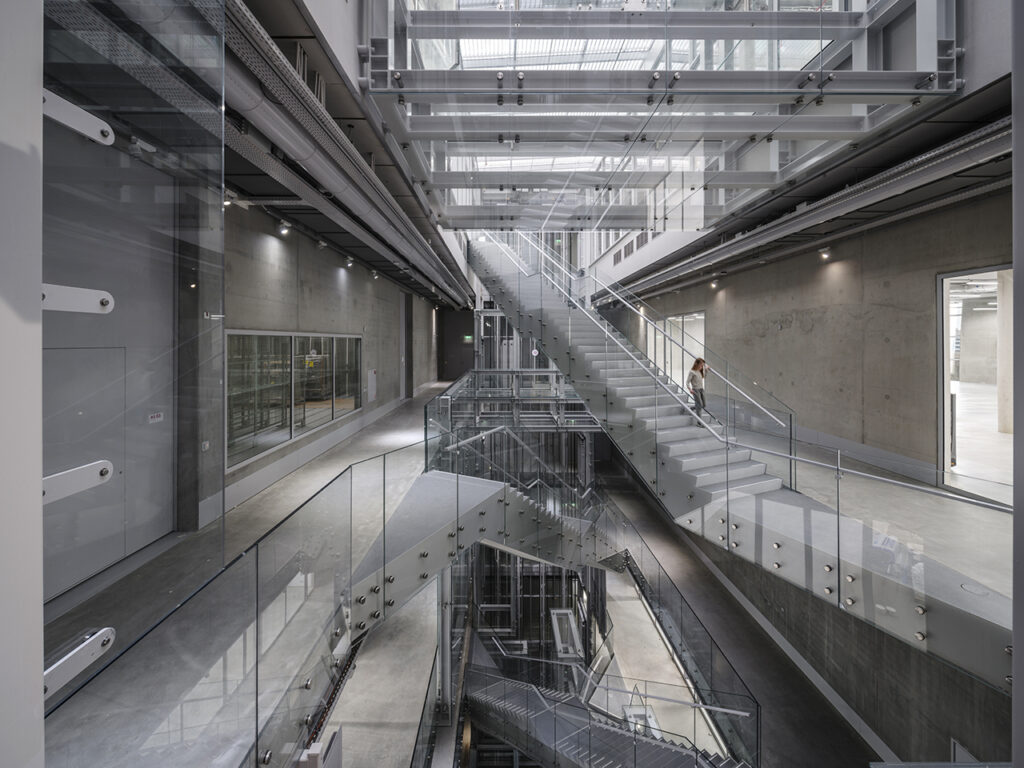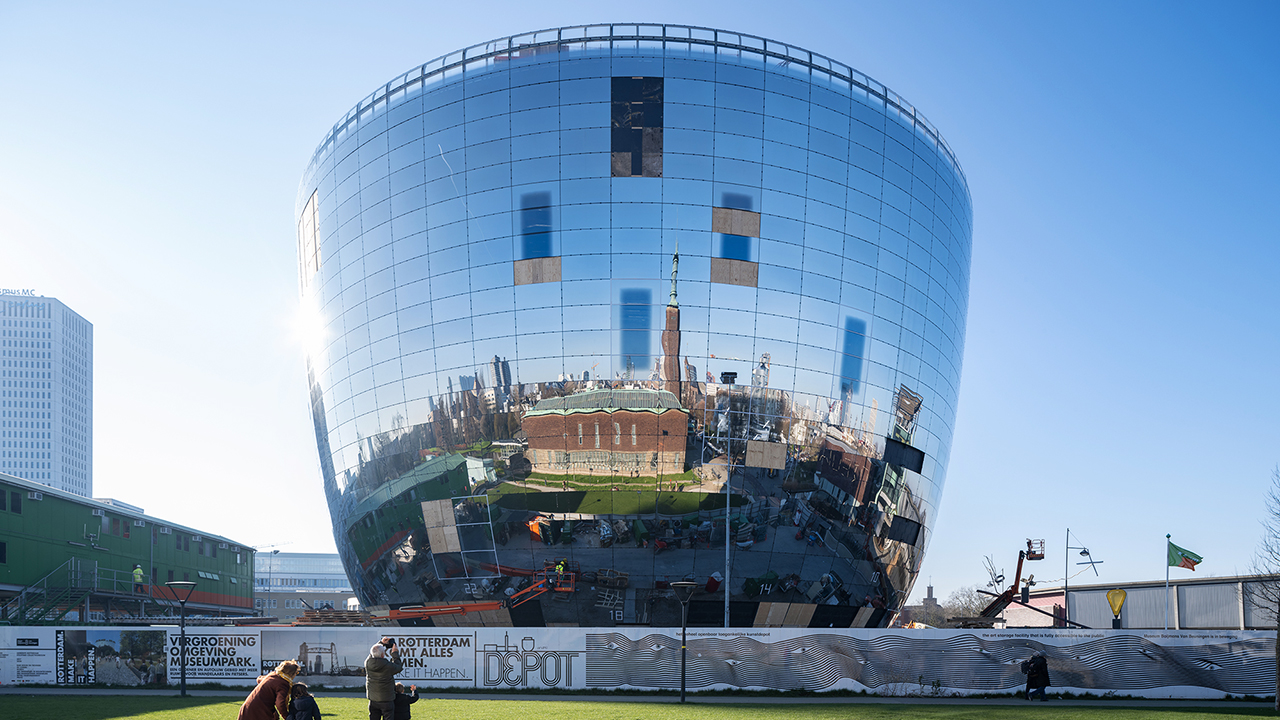Over the next three months, Rotterdam’s Museumpark will see a steady stream of lorries — 216 journeys carrying 1,589 tons of cargo, five days a week, to be precise. The freight? Virtually the entirety of a great European art collection.
When Depot Boijmans Van Beuningen opens its doors on November 6, visitors will have access to 151,000 artifacts, from Middle Ages utensils to Dutch Golden Age paintings to 20th century minimalist work. It’s a world first. Most major museums display little more than 5 percent of a collection, the Depot will make 99 percent accessible.


Paintings and artifacts being transported to the Depot, into a storage space which will be visible to the visiting public. Images: Aad Hoogendoorn
Appearing as a gleaming silver tea bowl in the heart of the city’s revitalized museum quarter, the Depot was designed with a reflective surface by local architecture firm MVRDV to blend in with its surroundings. The result is a ceaselessly shifting facade of clouds, passersby, and the Rotterdam skyline.
Inside, visitors will explore a central atrium which stretches up through the five-story building via zigzagging staircases and onto a roof giving panoramic city views. Storage space and curator studios adjoin this atrium on each floor with artifacts organized by five climatic zones based on temperature and humidity needs.
Curation will center on frequently rotated exhibitions displayed in the atrium, many using suspended glass cases that can be viewed from all angles. Visitors are also free to request any work the museum owns with the film and video collection available in special projection rooms.

The interior of the Depot Boijmans Van Beuningen. Image: Ossip van Duivenbode
Equally compelling, however, is the unmounted art of museum operations with audiences able to watch art being conserved, restored, packaged, and transported behind glass walls. The backstage, in other words, is the front stage.
“The special thing about the Depot in Rotterdam is it’s designed and conceived to welcome visitors,” says Boijmans Co-Director Sjarel Ex via email. “We hope to improve audience awareness about art conservation by showing how a museum cares for its collection.”
Transparency may be a proud Dutch quality — as shown by the Rijksmuseum recently restoring “Night Watch” in full public view — one the Depot Boijmans Van Beuningen is boldly embracing, but it’s also the product of logistical necessities. The home base next door, Museum Boijmans Van Beuningen, was in severe need of large-scale restoration on the grounds of flooding concerns, fire safety, and the use of asbestos. When it reopens in 2026, the pair will complement one another, enhancing one of Europe’s most dynamic art scenes.
The museum is already the Netherlands’ biggest lender along with the Rijksmuseum on account of the encyclopedic, international character of its collection — and the efficiencies borne out in its remodeling will make it more efficient than ever.
As Ex sees it, museums should become more transparent about collection artifacts that are not shown on a permanent basis. It’s a question of accessibility, one that’s come to the fore across the world after 18 months of pandemic-induced lockdowns. Most cultural institutions have responded with digital upgrades and Depot has too; it’s also taken the conversation several leaps further.



